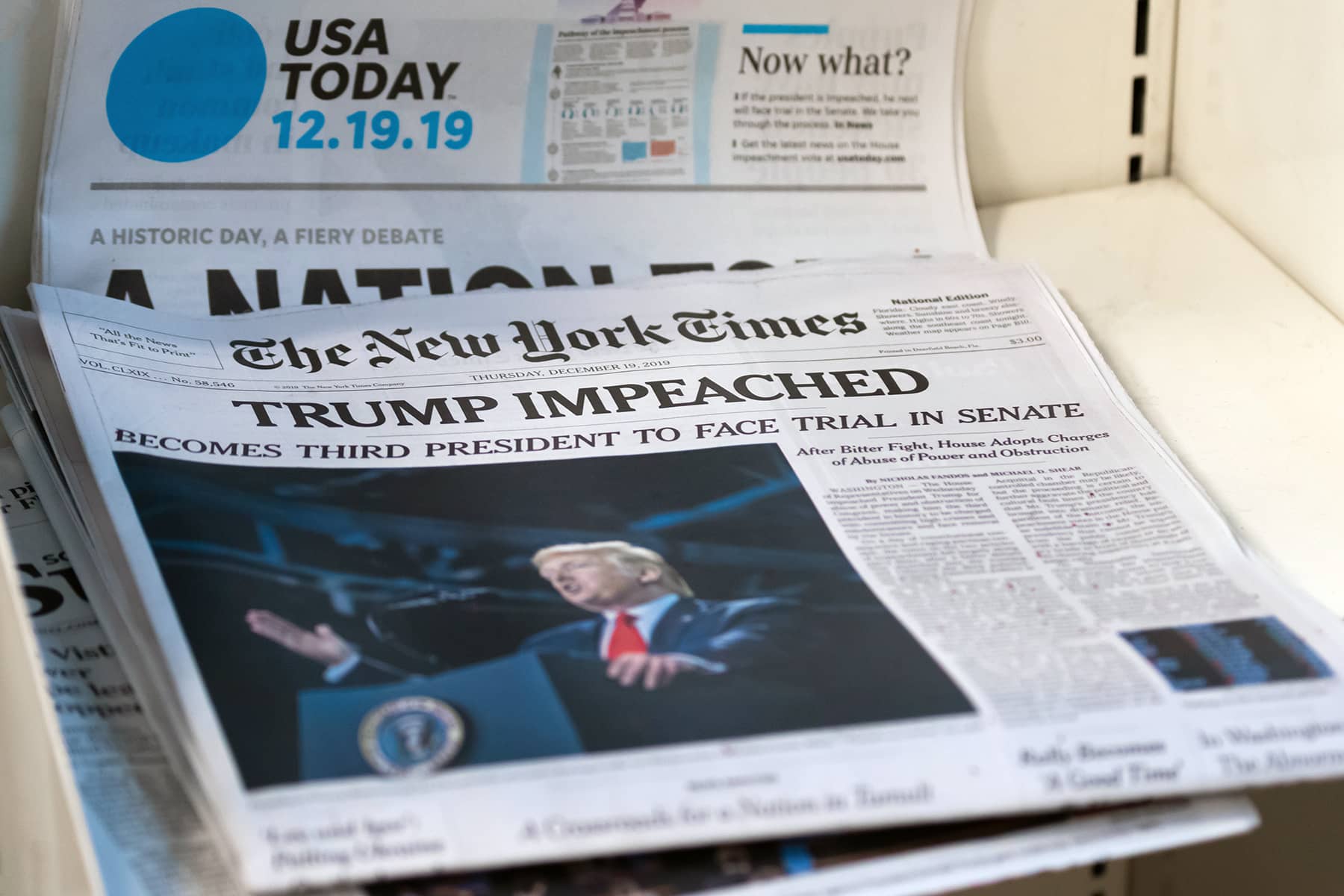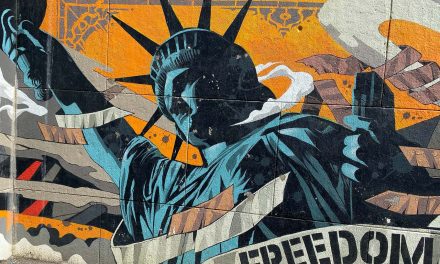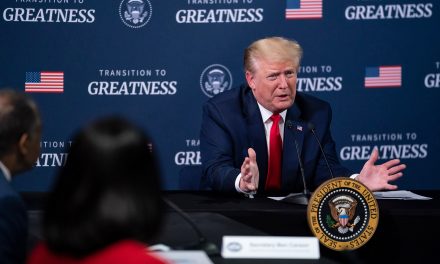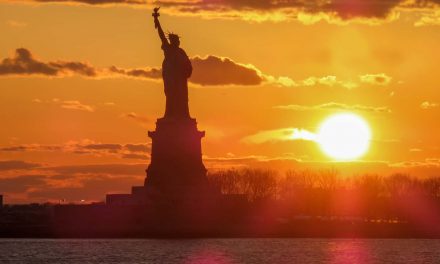
October 7 began with news that during Trump’s first impeachment trial, all the Republican senators believed Trump had broken the law when he tried to force President Volodymyr Zelensky of Ukraine to smear Hunter Biden before he would release the money Congress had appropriated to help Ukraine fight off Russia. “Out of one hundred senators, you have zero who believe you that there was no quid pro quo. None. There’s not a single one,” warned Senator Ted Cruz (R-TX), according to a forthcoming book by Politico reporter Rachael Bade and Washington Post reporter Karoun Demirjian.
But then–Senate majority leader Mitch McConnell (R-KY) kept the Republican senators behind Trump by telling them: “This is not about this president. It is not about anything he’s been accused of doing. It has always been about November 3, 2020. It’s about flipping the Senate.”
Republicans did not manage to hold the Senate, of course, in part because Trump’s fury at Republican leaders’ refusal to force Georgia to throw out its electoral votes made him depress Republican voting in the special Senate election that ultimately yielded two Democratic senators — Jon Ossoff and Raphael Warnock — and gave Democrats 50 seats. Because Vice President Kamala Harris, the deciding vote in the tied Senate, is a Democrat, control of the Senate shifted to the Democrats.
Democratic control of the House, Senate, and presidency ushered in an economic strategy discredited by Republicans since 1981. Rather than cutting taxes and regulations to move money upward to the “supply side” of the economy in the hope that wealthy investors would expand industries and hire more workers, the Democrats focused on getting money into the hands of ordinary Americans.
This investment in the “demand side” was the heart of government economic policy between 1933 and 1981 and brought about what economists know as the “great compression,” in which the wealth gap that had characterized the country in the 1920s shrank considerably. After President Ronald Reagan took office in 1981 and shifted the country toward supply side economics, that compression reversed to become the “great divergence.”
Their approach to the economy made Democrats invest in economic recovery from the worst of the pandemic with the American Rescue Plan, a $1.9 trillion economic stimulus bill passed in March 2021 with no Republican votes. That bill ushered in a dramatic economic recovery—the most rapid of any of the G7 wealthy nations—with the U.S. adding ten million jobs since Biden’s inauguration. No other president in our history has seen this level of job growth in his first two years in office.
A new jobs report revealed on October 7 that the U.S. economy added 263,000 jobs last month and the unemployment rate fell to 3.5%. That was more jobs and a lower unemployment rate than economists expected. That job growth has affected all Americans. The Hispanic jobless rate has fallen from 8.6% in Trump’s last month to 3.8% now; the Black jobless rate went from 9.2% to 5.8%. Notable in the numbers, though, was that K–12 education lost more than 21,000 workers in September, putting the number of teachers and support staff 309,000 people lower than it was before the pandemic.
That extraordinary job growth, along with money saved during the pandemic, helped to drive inflation, as people were able to pay higher prices for goods and services jacked up by supply chain tangles, transportation shortages, and price gouging. But so far, it does not seem that we are locked into an inflationary spiral as we were in the 1970s.
Seemingly paradoxically, the good news about jobs drove the stock market downward. Investors are guessing that the Federal Reserve will raise interest rates to slow down the economy. If it costs more to borrow, businesses will likely cut back hiring and wages. Less money in people’s hands should slow the inflation that’s still high.
The Democrats have also hammered out legislation to rebuild the nation’s infrastructure. Last November, they passed the $1.2 trillion Infrastructure Investment and Jobs Act to rebuild the nation’s crumbling roads and bridges and to extend broadband to rural areas. More than 60% of Americans wanted infrastructure investment, and for that bill, which is often called the Bipartisan Infrastructure Law, the Democrats picked up “aye” votes from 19 Republican senators and 13 Republican representatives.
But former president Trump attacked those Republicans who voted for the measure, insisting that Republicans’ main goal was to keep Biden from accomplishing anything. “Very sad that the RINOs in the House and Senate gave Biden and Democrats a victory on the ‘Non-Infrastructure’ Bill,” Trump said. “All Republicans who voted for Democrat longevity should be ashamed of themselves, in particular Mitch McConnell, for granting a two month stay which allowed the Democrats time to work things out at our Country’s, and the Republican Party’s, expense!”
Trump loyalists threatened to strip committee assignments from Republicans who supported the bill. They complained about what Minnesota representative Tom Emmer called “President Biden’s multi-trillion dollar socialist wish list.” Arizona representative Paul Gosar said: “this bill only serves to advance the America Last’s socialist agenda, while completely lacking fiscal responsibility.”
Kentucky representative Andy Barr said the measure was a “big government socialist agenda.” Iowa representative Ashley Hinson said the law was a “socialist spending spree.” Representative Markwayne Mullin of Oklahoma said: “I will not support funding for policies that drive our country into socialism.”
In the CNN piece that collected all those quotations, authors Edward-Isaac Dovere and Sarah Fortinsky went on to point out that, despite their insistence that government investment in infrastructure is socialism – it is not, by the way, all these representatives and more have been quietly applying to take that money to their districts, often in the same language Democrats used to justify the bill in the first place.
Improving highways would “serve as a social justice measure,” Emmer wrote. “The completion of this project means improved economic opportunities for ethnically underserved communities.” Adding bicycle lanes to a rural area, Mullin wrote, “would greatly improve sustainability by reducing emissions and redeveloping an existing infrastructure plan.”
The president has directed his administration not to let politics or votes for the bill influence how project grants are awarded. But for all their talk of socialism and wasteful spending, Republicans clearly understand that the American people want investment in the country and that such investment improves their quality of life. They just do not want to vote for it after years of rallying voters with a narrative that any Democratic investments in the country are far-left radicalism.
On October 7, Biden named the Republicans who voted against the infrastructure law and then asked for money. Biden said, “I was surprised to see so many socialists in the Republican caucus.”
YЕS Mаrkеt Mеdiа and Phil Pаsquіnі
Letters from an Аmerican is a daily email newsletter written by Heather Cox Richardson, about the history behind today’s politics















